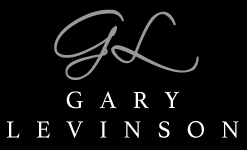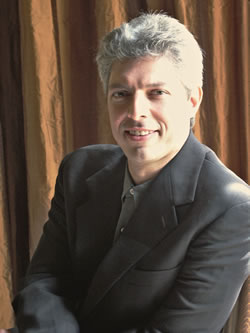I have a new student. When she first entered my studio, accompanied by both parents, I already know the type. Ambitious, ready to conquer every possible competition, and eliminate whatever shortcomings exist in her technique and musicianship. I am thinking, “Can’t wait to hear her”. As she gets her violin out and starts tuning, I feel the tension emanating from her and (especially) her parents. So before she plays, I try to put her at ease, explaining that she need not impress me, she is already in my studio. I am here to get the most out of her talent, not to catch her at what she is doing wrong. A timid smile comes out of her followed by the opening of Bruch G minor concerto.
In 30 seconds I see the problem. Intonation is nowhere near because she is not thinking in terms of key centers and triads. Intervals are pointing in all directions, double stops are all over the place. The bow arm has other issues, but last on her list of goals is any sort of discernable phrasing. She plays for two pages and I get ready to talk about a plan of action for our work together. Suddenly, her mom jumps in with obvious pride and tells me her daughter is up to three hours a day practicing, so she is on her way to becoming a violin expert! Now I see where this is going. The mom quickly tells me that since her daughter started getting “serious” about the violin, she is at 3,603 hours towards her 10,000 hour goal. I already hear my inner game show host’s voice announcing, “Pack your bags, you are going to beautiful [insert destination of your dreams here]”.
What follows is a conversation I have with at least 75% of my students. Rather than recall the nuts and bolts of these conversations, shall we just cut to the chase?
In the past 30 plus years of teaching I have found some patterns concerning practice and subsequent expectation of excellence. In short, the notion of more hours is better is right up there with snake oil on the list of mirage-level myths which sound really great, but never pan out. “If one hour is good, then three hours is three times as good”, the thinking goes. Really? What if the student is practicing the wrong note for three hours? How about poor intonation, inappropriate vibrato, tasteless phrasing? How much better is that student going to get?
Obviously, the repetition is only good if it is coupled with careful evaluation. This means that every attempt has to come with the following procedure:
- What is the issue?
- What method are you using to solve it? (this is one of the most difficult concept to grasp as most students will play it again over and over without even stopping to think if the issue is better or worse)
- How is the solution process going?
No. 3 is especially difficult because often times palpable progress is a long term proposition. I had a former student who was convinced her hands were too small for fingered octaves. So I showed her a number of players whose hands were smaller than hers yet played fingered octaves without any problem. The solution lay in stretching the hand so she could reach the octave. Said stretch can take between one and three weeks, depending on the student’s flexibility and, most importantly, adherence to the procedure of the stretch precisely the way their teacher recommends.
But too often I see students skip steps, morph several steps together and subsequently complain that the solution is not working. So I came up with a 10 point plan that, if followed, will help get the results both the player and the professor are looking for.
- Listen to your playing
- Seems like a crazy idea, no? Who doesn’t hear their own playing? Surely this is some sort of typo. Actually – no. There is a profound difference between hearing yourself play which yields very simple results (wrong notes and rhythms, confused bowings, etc.) and actually listening to what is coming out which raises the ante to a much higher level. This is where the student can hear poor shifts due to lack of preparation, bow distribution, gaps in musicianship and other details that make their playing stand out.
- Make every repetition count
- We’ve all done it. At some point in our piece we need to fix something. We jump into work mode and play the passage over and over. Sometimes it magically gets better, sometimes not.
- Rather than gambling, try this. When you are fixing something, play it only once. Then stop and ask yourself, “How did that go?” That split second of evaluation does loads of good and keeps the focus on the solution rather than empty repetition which more times than not is doing some harm.
- The subsequent time you play the fix, at the end of the passage, ask yourself, “Is that going in the right direction, wrong direction or is the fix completed?” Just taking that extra moment of evaluation saves dozens of hours of what feels like wonderfully productive practicing, but is in fact almost completely unproductive. Productivity starts with efficiency and that means demanding you stick only the correct method (which is presumably decided by the teacher and, at a certain point, an advanced student). Keeping bad habits at bay goes a long way to fixing the problem in the quickest amount of time.
- Related to no. 2, make sure you repeat from the right spot and at least three successful attempts in a row.
- I lost count of how many times I have had a student stop after they have some kind of problem, noodle some incoherent set of notes related to the problem itself and proceed merrily on their way AFTER the problematic section! This accomplishes little more than simply delude the student into a false sense of security. “See, I’ve worked on it”, says their inner self.
- Instead I recommend starting a couple of bars prior to the bar that needs the work.
- Play significantly slower than the tempo and focus on solving the problem in that tempo.
- Most important is to play the same bowings, dynamics, phrasing and articulation. Otherwise the muscle memory in either hand will not pay attention and lead to other issues which are peripheral to the fix.
- If the under tempo playing is successful, build up to tempo in small metronome increments (no more than 10 points at a time), until at every stage the student achieves the quality they are looking for in the original tempo.
- Equally important is the ability to continue playing after the problem bar, so the brain gets used to owning the problem area and all the music before and after it. A few bars after is enough, but with the same commitment as the area we were just working on.
- Use 21st century technology
- Almost every student records some or all of their lessons. But when it comes to listening to the recording, opinions vary from watching the video once after the lesson to watching it before every practice session. The trouble is we need to make the video relevant to the issues the student has in the practice studio.
- I use the following setup: two iOS devices for seeing simultaneously the work of the right and left hand. (I know it sounds expensive but a first generation ipad, or an iphone will do the job, are very economical and work just fine), software to control the two cameras (I use Recolivecam) and some kind of monitor to project the two recorded screens simultaneously.
- Set up this way, the student has access to everything they are doing in real time with instant feedback. This results in tremendous time savings during daily practice.
- Resist the urge to pretend no one will notice
- Can you really take that chance? What if you are wrong and the one person who does notice can be your ticket for future performances and opportunities? Reality, no matter how disappointing, trumps fantasy, since the real world, for the most part, does value reality over fantasy which makes us feel good, but can’t make palpable changes for the positive.
- In lessons, be active
- Does this mean emoting and dancing in front of the teacher? No, it means realizing that one set of instructions may be compelling to a student but not this student! So if you don’t quite get it, speak up! Ask your teacher to use a different way to explain it, whether it is playing it or using a separate metaphor to make the teacher’s point. No good teacher will be against it; it is the student who stares blankly at the teacher because they are too shy to admit they are not clear on what is being asked of them that tends to drive me and many of my colleagues up a wall. If you don’t get it 100%, speak up!
- Make mental notes during the lesson
- I have had students tune out during the lesson because “the video is getting the info”. This is a dangerous habit, because the student begins to use a tool designed to supplement their listening as a shortcut to absentmindedness.
- Making mental notes will quicken the learning process and you can still refer to the video as final touch to your presentation.
- Schedule run-throughs
- It doesn’t matter who is listening. What matters is seeing where you are in the learning process and building stamina to get the best out of yourself when the concert comes.
- Gravitate to people better than you
- Play with students who are more advanced than you and see what they are doing for progress. You can learn a lot from peers when you talk turkey with them. If it’s not for you, you can still figure out what not to do.
- Go to live performances of great players
- No amount of practicing can make up for the thrill of hearing a master draw the sound from their instrument. Every performance is different and students can learn a great deal from watching a great master address the very same issues that are a struggle for the students. Sometimes watching the solution right there on the spot can mean the difference between ho hum and breakthrough.
- Sure, YouTube is more convenient and free, but there is no substitute for experiencing the live atmosphere of a great concert.
Finally, remember that all the hours are a means to an end – the ability to move the audience with your interpretation. This is the reason the 10 point plan only works if you follow all ten points. No cherry picking, or poor results will be in order. The links below elucidate more on the 10,000 hour method. Happy SMART practicing!
http://www.wisdomgroup.com/blog/10000-hours-of-practice/
http://www.makeuseof.com/tag/10000-hour-rule-wrong-really-master-skill/


